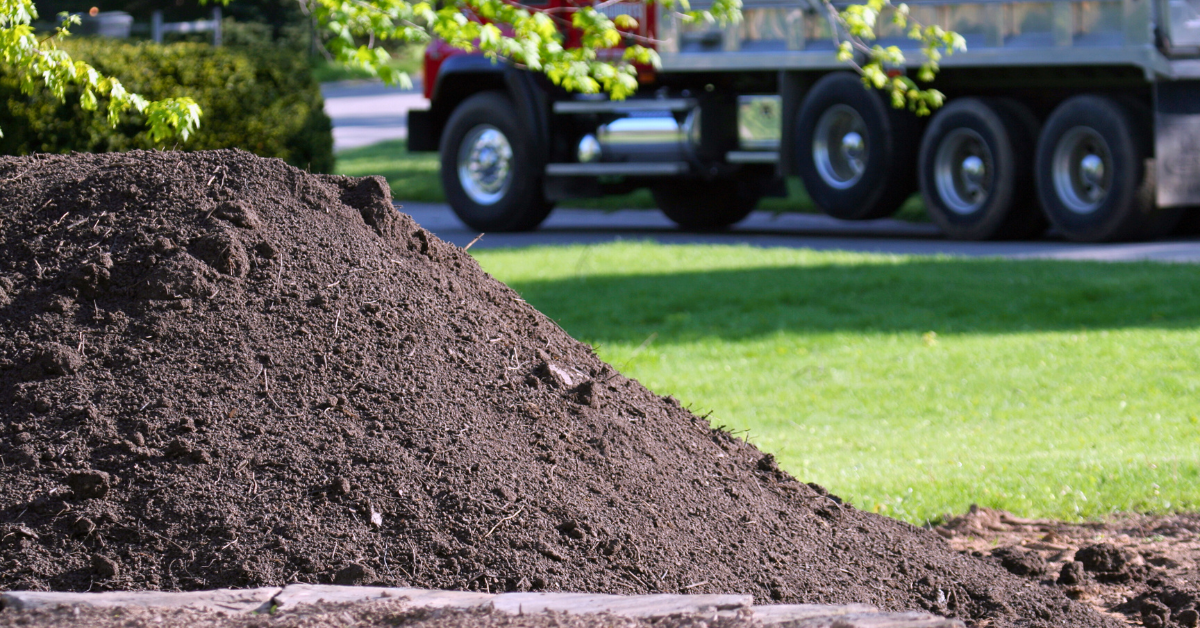There’s a lot more to landscaping than just arranging plants and designing outdoor spaces. You need to help an environment thrive while seamlessly blending nature and more man-made aesthetics! One crucial element that too many people overlook is the soil itself—after all, it’s not nearly as exciting as tulips and hedges. Among the various types of soil is topsoil, which plays a pretty important role in the success of your landscaping project. But what is topsoil going to do for your landscaping that standard soil can’t? To start, it’s rich in organic matter and nutrients your plants will need to thrive. There’s more to it than that, though, so let’s get our hands dirty.
What is Topsoil?
This type of soil was admittedly named by someone who wasn’t very creative. It’s the top layer, ranging anywhere from two to eight inches deep. It’s packed with organic matter, minerals, and other nutrients, meaning it’s incredibly fertile. This is where plants take root and get the nutrients they’ll need right off the bat. It’s teeming with microorganisms that make it really healthy, unlike the subsoil underneath it. Its quality has a direct impact on landscaping projects and their success, thanks to its ability to help plants grow, retain water, and maintain overall structure.
Benefits
There’s an impressive number of benefits to using this type of soil, so let’s cover them one by one!
Nutrient-Rich Base
This is a foundation for plants and grass that’s nutritional powerhouse thanks to its richness in nitrogen, phosphorus, and potassium. These are all vital for the healthy developments of plants, helping them establish strong roots, grow vibrant foliage, and produce robust blooms. Without this important top layer of soil, many plants struggle to grow and could even die.
Water Retention
The ability for this soil to retain moisture is one of its defining traits. When this much water is readily available to young plants, it’s no wonder they’re able to grow and thrive so easily! The organic matter in this soil has qualities similar to a sponge, holding water and slowly releasing it over time. This lack of runoff means plants have a steady supply of moisture even during dry spells. Thanks to this water retention the landscape becomes lush and green, which is especially important in drought-prone areas.
Improving Soil Structure
Topsoil doesn’t just help the plants, though. The soil underneath benefits, as well! Yes, it encourages root growth, but it also increases the soil’s ability to absorb and retain moisture. Soil that has good structure boasts improved air circulation and drainage, both essential qualities that support healthy plants. Additionally, the soil can enjoy a hospitable environment thanks to the beneficial microorganisms it wouldn’t otherwise host.
Erosion Prevention
One challenge every landscaper faces is erosion. Slopes and other areas with poor vegetation cover provide a combination of circumstances that make it easy for unwelcome shifts and runoff to occur. That’s where topsoil comes in. It provides the stable surface required for plant roots to take hold. Its organic matter binds soil particles together, which reduces the risk of soil being washed away by rain or wind. When the risk of erosion is low, long-term stability and health are much more likely.
Making the Right Choice
Of course, not all products are created equal. When it comes to this nutrient-rich layer for your plants, it’s best to splurge a bit. Look for dark, crumbly, and debris-free options. Making a selection that’s appropriate for your specific needs is of course just as important. Whether you’re planting a garden, establishing your lawn, or making a flower bed, keep an eye out for options that lend themselves to your end goal.
If you want to take it a step further, consider testing pH levels and other levels in the topsoil before making your final purchasing decision. We know this process can be tedious, but we promise it’s worth the extra effort!
How to Apply It
If you want to enjoy the benefits of this resource for your landscaping, it’s important to apply it correctly. Start by preparing the area where you’ll be adding it—removing weeds, rocks, and other debris. Make sure you spread it evenly over the area. Your goal here is to achieve a layer of about four to six inches. If you’re working in a garden bed, work the topsoil into the existing soil a bit to make a level surface. If you’re working in a lawn, a roller will be a huge help with compaction. This ensures healthy seed-to-soil contact. Be aware, however, that an application that’s too thick can smother plants and prevent them from becoming as healthy as they could. If you’re working on compacted ground, be sure to loosen it a bit to allow for root penetration.
Get Growing!
Topsoil is a major component of a successful landscape that shouldn’t be overlooked. Thanks to the nutrients, water retention, and structure it provides, your plants will be happy to have its help—especially when they’re still trying to take root and thrive! For more tips on how to select and utilize this vital product, get in touch with us. We’re happy to help!

